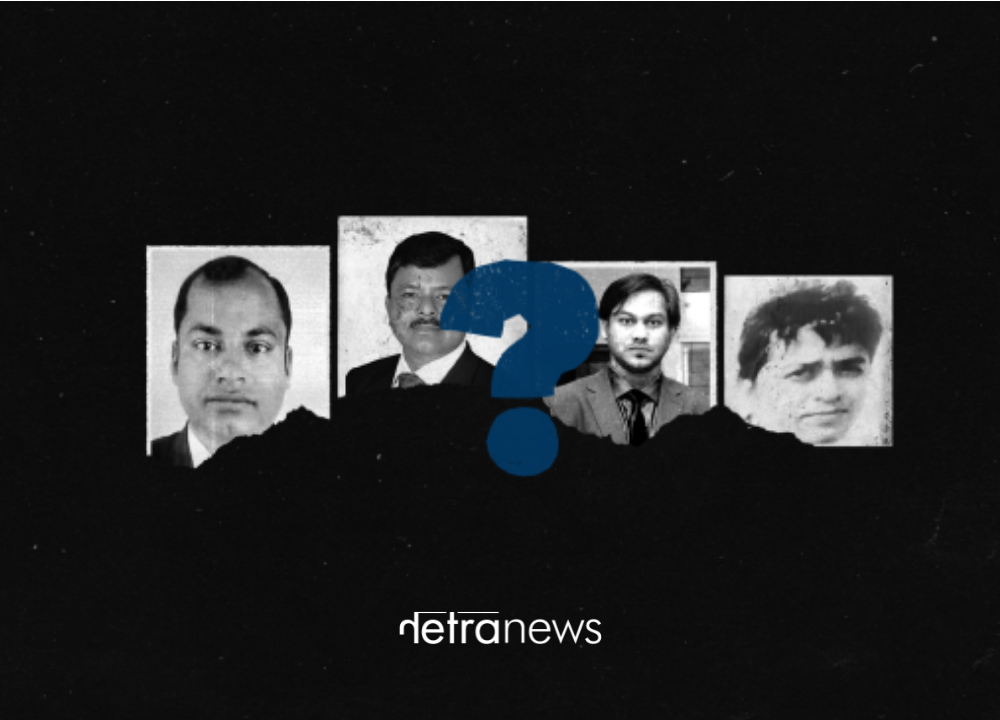Leaked documents: RAB abducted Ilias Ali
RAB-1: “If scrutinised closely, one can understand that [the disappearance of Ilias Ali] was a well-planned mission” that was “evidently carried out by RAB’s intelligence wing.”
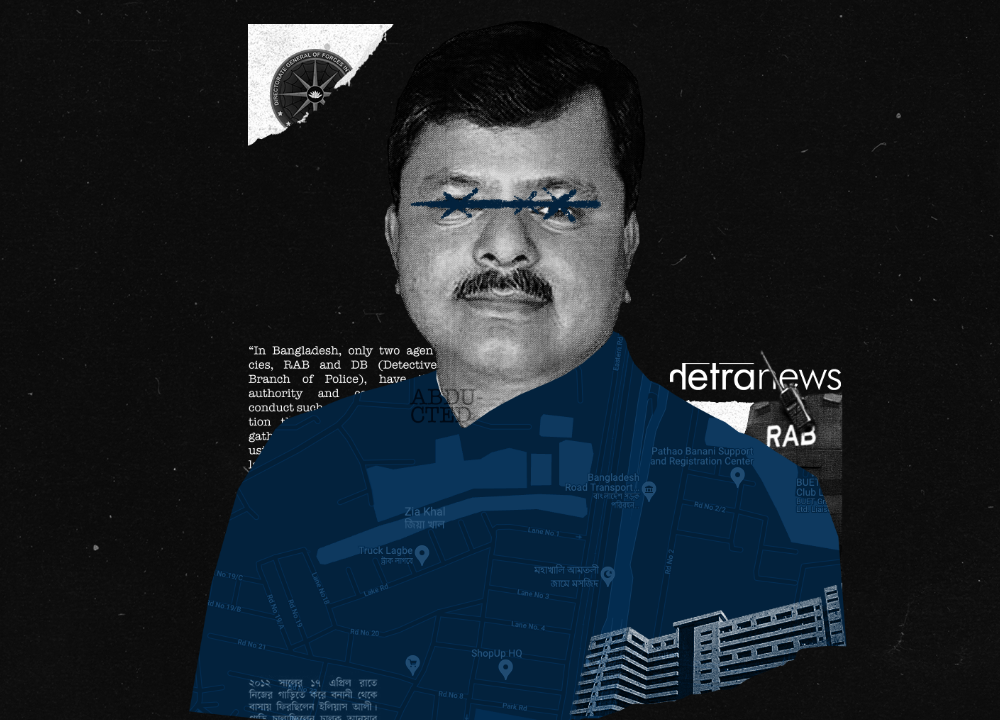
On the night of April 17th 2012, Ilias Ali, a prominent politician with the opposition Bangladesh Nationalist Party (BNP), became the victim of enforced disappearance. Along with his driver, he was abducted from Banani, Dhaka, while they were en route home from Hotel Sheraton.
“When he was returning home, several armed plainclothes individuals, who had arrived at the scene on two white microbuses, blockaded his car and forcibly captured him and his driver Ansar Ali,” Tahsina Rushdir, the wife of the former lawmaker, recalled in an interview with Netra News.
However, Netra News has now obtained a set of confidential documents detailing the findings of RAB-1’s investigation that conclusively confirmed that the agency’s own intelligence wing had carried out the abduction.
Days after Ilias Ali disappeared from Banani, RAB-1 launched an inquiry as Banani, where the incident took place, was part of its jurisdiction. The unit’s investigators found that two military officers deputised to RAB’s intelligence wing had taken part in the incident. That finding prompted the investigators to send a copy of their findings to the Directorate General of Forces Intelligence (DGFI) and Directorate of Military Intelligence (DMI), in addition to RAB headquarters. However, no agency appears to have taken any visible actions.
A military officer, with ties to DGFI, has recently leaked a copy of this document to Netra News. Following an exhaustive investigation, Netra News was able to corroborate the document’s authenticity through multiple military sources and obtained additional evidentiary documents that further backed its findings. With the help of Zulkarnain Saer Khan, a whistleblower turned independent journalist, Netra News interviewed a number of current and former ranking military officers. Due to the sensitive nature of this story, we have decided not to disclose their names and other details.
What the document contains
As a prelude to their findings, the investigators wrote that “if scrutinised closely, one can understand that [the disappearance of Ilias Ali] was a well-planned mission” that was “evidently carried out by RAB’s intelligence wing.”
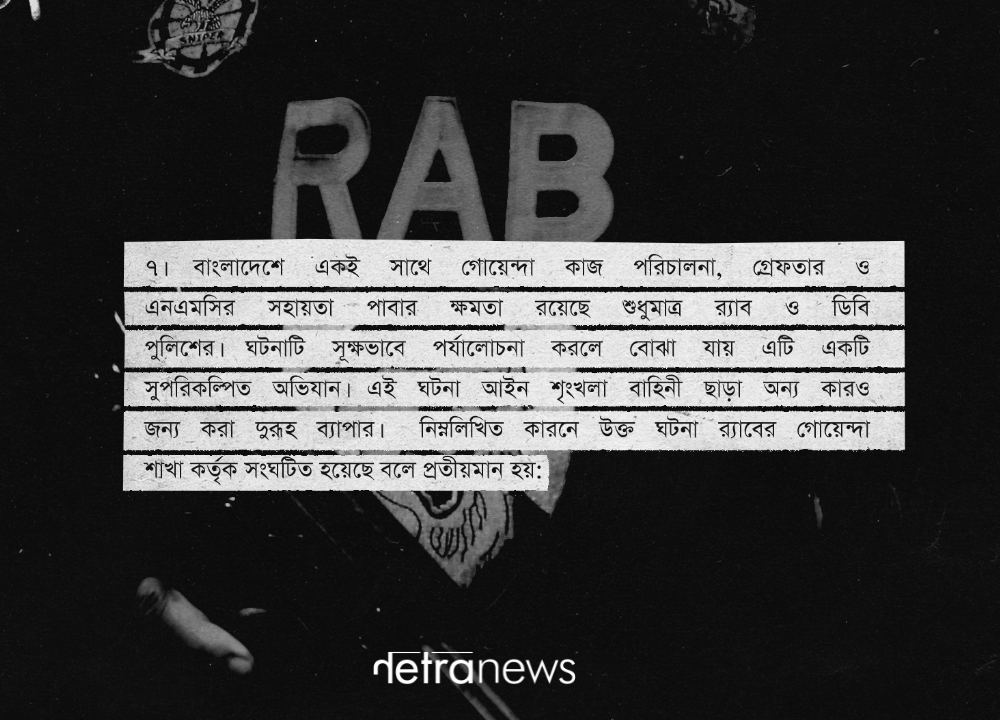
The RAB-1 officials began their investigation by identifying three suspicious mobile phone numbers whose users had been present at and around the abduction spot at the time. By analysing the call data record (CDR) of these three numbers, they detected five additional numbers connected to the original ones.
All eight of them were numbers from CityCell, the now-defunct lone CDMA operator of the country.
An official explained that surveillance technology available in Bangladesh could not target mobile numbers with CityCell, the now-defunct lone CDMA operator of the country. That was precisely why investigators had amassed CDR records of all CityCell numbers that were active on that fateful night.
The investigators subsequently found that all the eight numbers had been purchased from Desh Telecom, a store in Uttara, Dhaka. Netra News separately obtained copies of the registration forms containing fake identities.
All of the eight numbers, the investigators found, had been activated after 11.00 pm on April 17th and switched off around 1.00 pm on April 18th. It was during these three hours that Ilias Ali disappeared. These numbers, they also noticed, only communicated between themselves and made no other calls to anyone.
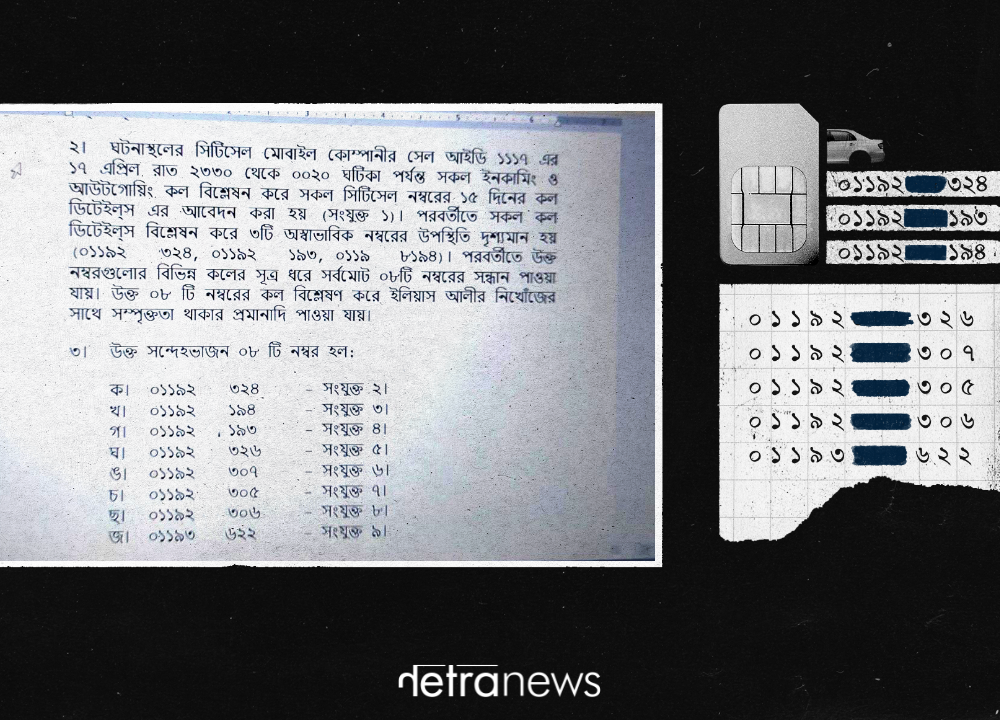
RAB-1’s analysis suggests three separate teams worked in tandem to execute the mission. The first team was present on the spot and abducted Ilias Ali and his driver. Four RUIM (removable user identity module) cards used by this operational team had been activated near the Hazrat Shahjalal International Airport and the Joar Sahara district. A second team trailed Ilias Ali when he left Sheraton Hotel for his home. The third team was inside the National Monitoring Centre (NMC) located at DGFI headquarters, providing the operational team with mobile phone surveillance support.
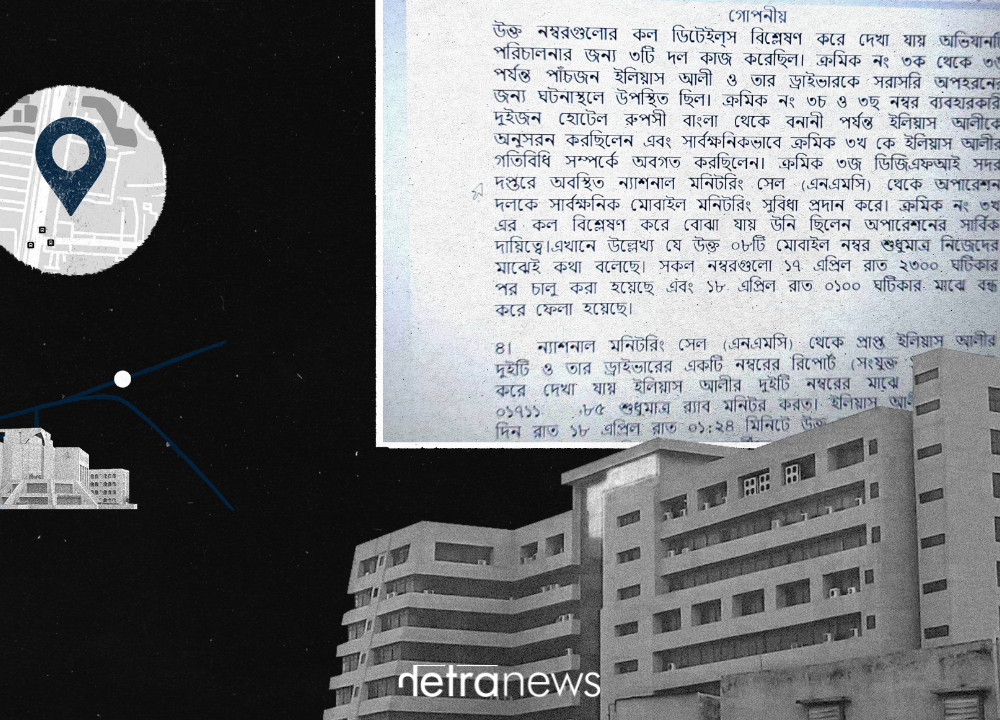
At this stage, RAB-1 investigators were confident that a security agency had pulled off the abduction, but they still could not determine who were the actual perpetrators. They wrote in their preliminary observation that in 2012 “only RAB and Detective Branch (DB) of Police could carry out detention, surveillance and intelligence operations, and access NMC, simultaneously.”
The investigators then focused on solving the last piece of the puzzle: who was at NMC at the time of the abduction? It was only by pursuing this lead that they realised the perpetrators were connected to RAB’s intelligence wing.
DGFI headquarters’ entry and exit logs, obtained by Netra News separately, show that Captain Tauhidul Islam and Captain Monjurul Hasan, both of whom were assigned with RAB intelligence wing at the time, entered and left NMC, one after another, between 10.50 pm that night and 3.05 am the following morning.
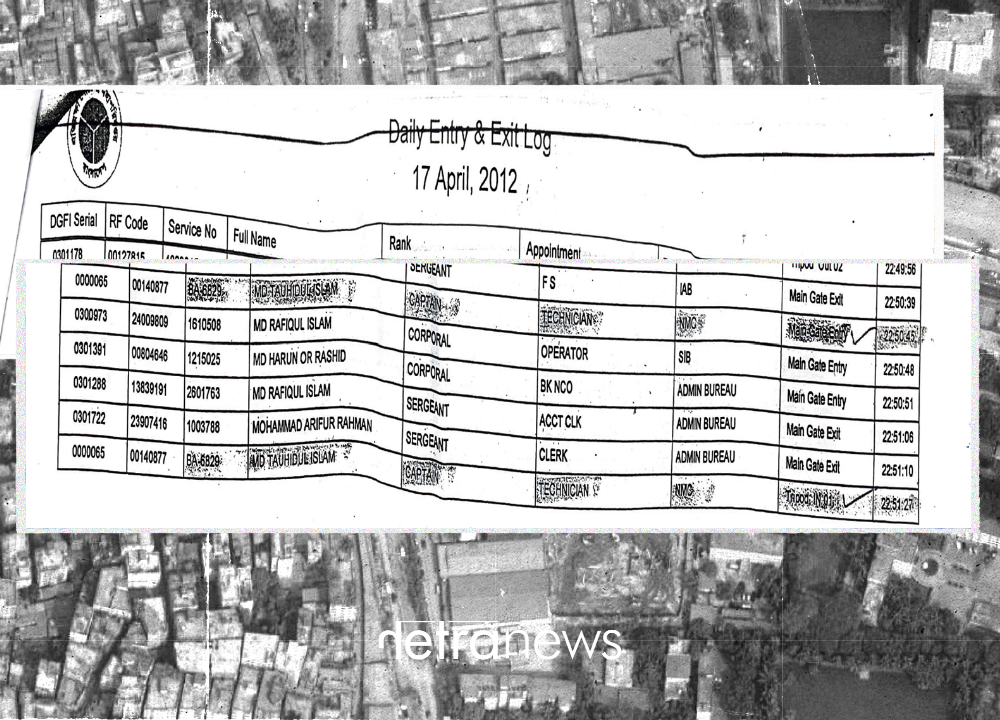
“One can infer from the presence of Captain Monjur and Captain Tauhid at the DGFI headquarters that they were part of the operation, and both officers are currently working at RAB’s intelligence wing,” the RAB-1 document notes.
When contacted by Netra News, both Tauhidul Islam and Monjurul Hasan, now lieutenant colonels in Bangladesh Army, denied the allegation of being involved in abducting Ilias Ali.
“Zia’s blue-eyed boys”
A high-ranking military officer with access to the service records of these two officers told Netra News that their personal files stored in the army headquarters also contained a copy of RAB-1’s confidential document. This officer provided Netra News with a separate copy of the same document.
He further asserted that within the army, Tauhidul Islam and Monjurul Hasan are known as Brigadier General Ziaul Ahsan’s “blue-eyed boys.” In 2012, as the chief of RAB’s intelligence wing, Ziaul Ahsan, then a lieutenant colonel, was their direct superior officer.
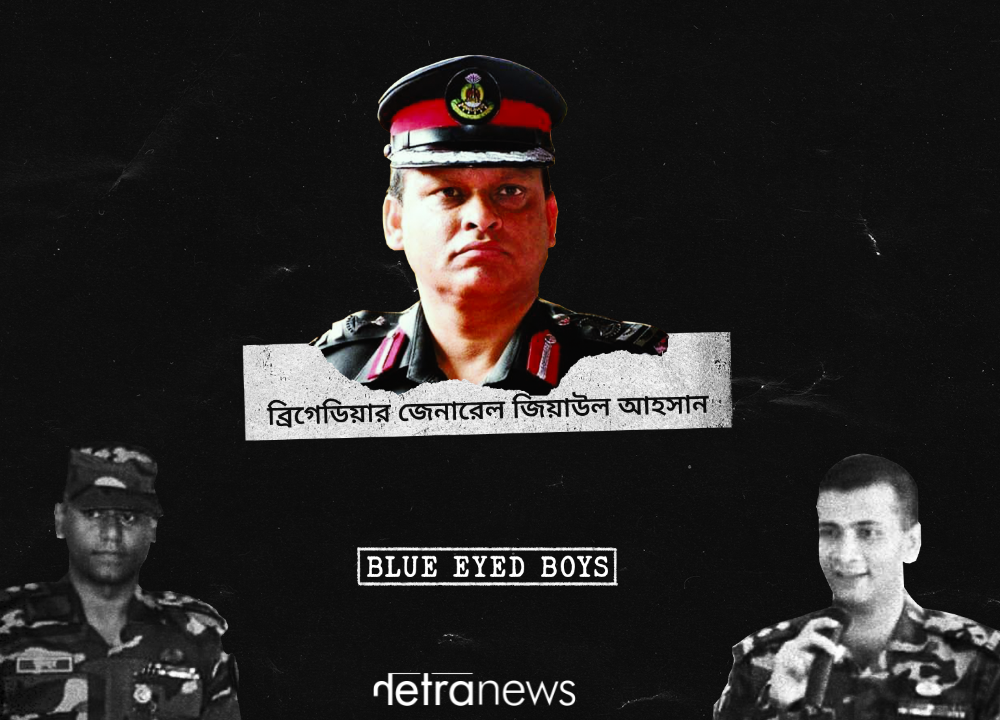
Two military officials separately told Netra News that Ziaul Ahsan himself was intricately involved with the abduction. They said days before Ilias Ali was abducted, two of his political associates, Iftekhar Ahmed Dinar and Juned Ahmed, both activists with BNP’s student wing, Chhatra Dal, had been picked up. They had been interrogated at the notorious Taskforce for Interrogation (TFI) cell, which was headed by Captain Tauhidul Islam. They say that information derived from the interrogation helped RAB’s intelligence wing plan Ilias’ abduction. They further claimed that Ziaul Ahsan was a passenger on the flight that carried Ilias Ali from Sylhet to Dhaka on the afternoon of April 17th.
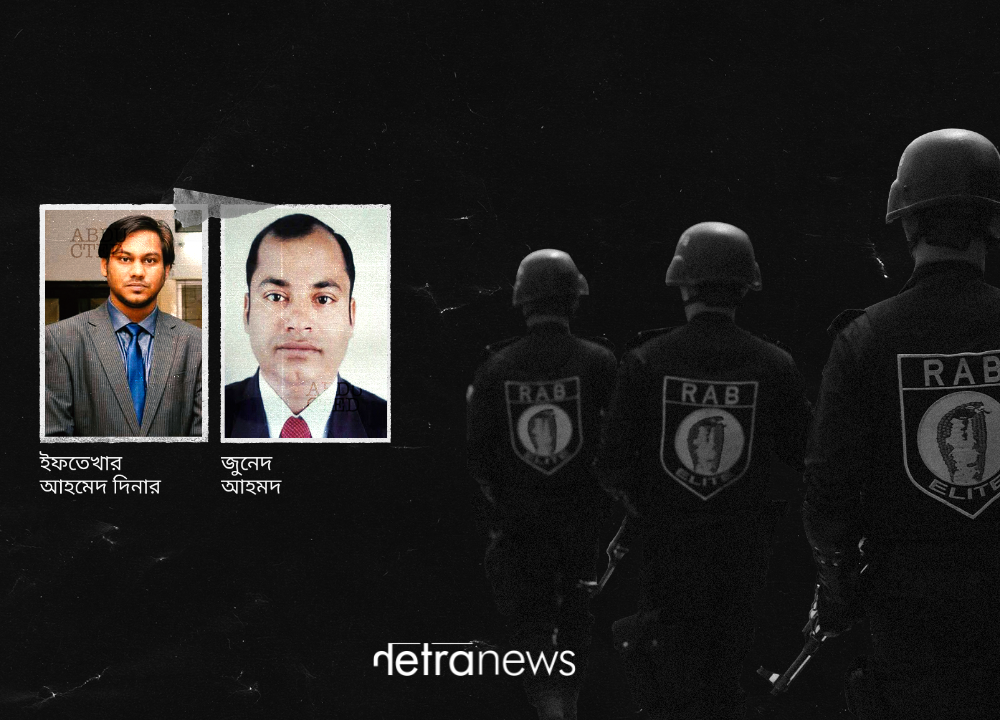
Netra News could not corroborate the claim independently, but such allegations against Ziaul Ahsan are not new.
In a recording broadcast by the New York-based exiled journalist Kanak Sarwar, the former army chief, General Aziz Ahmed, was heard explaining to a friend that Ziaul Ahsan had been responsible for many of the disappearances that took place in Bangladesh.
Brigadier Ahsan currently serves as the chief of the National Telecommunication Monitoring Centre (NTMC), the predecessor of the National Monitoring Centre (NMC), which has since been transferred out of the DGFI headquarters and placed under the Ministry of Home Affairs.
Changes in mobile surveillance
An additional piece of evidence that further incriminates RAB with this abduction can be derived from NMC’s own records.
A separate document originally compiled by DGFI’s Signal Intelligence Bureau (SIB) shows that Ilias Ali used two mobile phone numbers. One of the numbers was exclusively monitored by RAB. All other agencies, including RAB, monitored the other.
At 1.24 am on April 18th, the number which was monitored only by RAB, was abruptly delisted from RAB’s monitoring list. Days earlier, on April 2nd, the second number also had been removed from RAB’s list. After Ilias Ali was abducted, RAB resumed monitoring the phone numbers again.
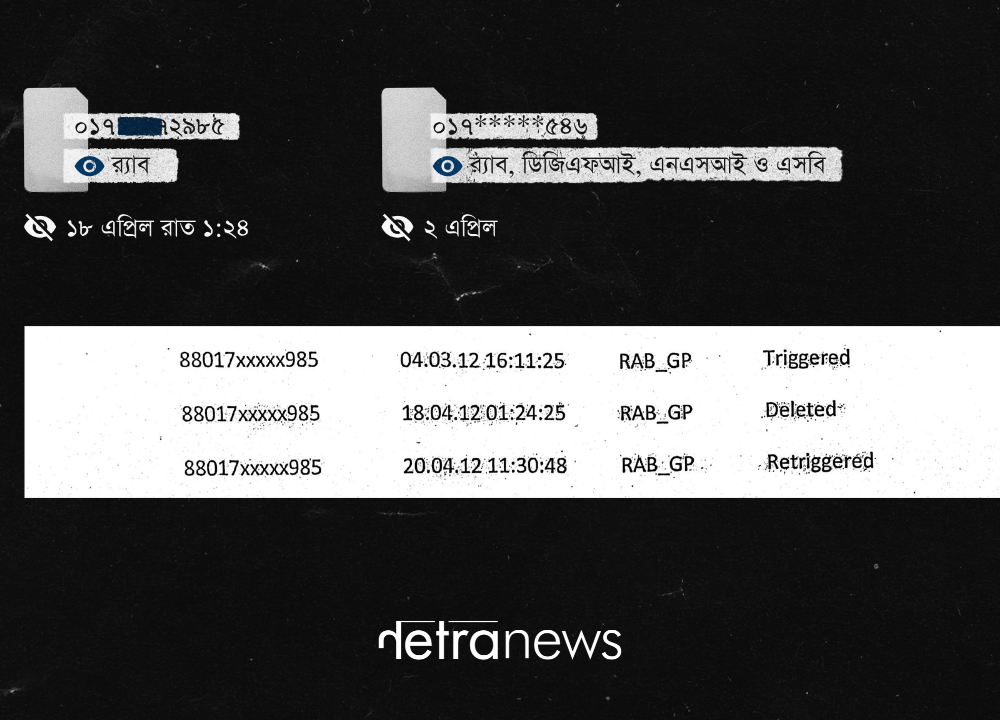
The abrupt changes in RAB’s surveillance over Ilias Ali’s mobile phone numbers caught the attention of DGFI officials, who kept note of the changes. RAB-1 officials investigating Ilias Ali’s abduction also noted the changes and concluded that “the period between RAB’s removal of Ilias Ali’s numbers from its monitoring list and the resumption of its monitoring” also suggests the agency’s involvement.
Reactions
In a written statement, Ziaul Ahsan categorically denied the allegations against him, “This is all fake and fabricated information given to you by someone. Officers of [the intelligence wing] were not involved in this abduction. Rather RAB carried out a number of operations based on their information with his family member and his wife to recover him.”
In relation to DGFI, Ahsan said: “No comments on the information from DGFI. If DGFI could find this out, then why didn’t they inform the government or RAB or the police authority [at that time].”
He also claimed he had never seen Ilias Ali in person “anywhere in the world”, let alone trailing him on a flight.
In his written statement, DGFI’s spokesperson, Brigadier General Abul Hasnat Muhammad Qamaruzzaman Khan, told Netra News: “DGFI always collects information from various sources. During that period, no anomalies were found in NMC.”
As for documents obtained by Netra News, he said: “This is a fake document and someone may have given it to you to mislead, and make this well reputed organisation controversial.”
After the publication of the Bangla version of this story, RAB’s spokesperson, Commander Khandaker Al Moin told Manab Zamin, a Bangladeshi vernacular, “The majority of the information mentioned in [Netra News’] story seemed baseless. They presented information as they deemed fit.”
He also added, “If someone published this news item from inside the country, necessary legal actions could have been taken against them as soon as possible. When someone publishes such articles from abroad, there is almost nothing that we can do.”
Moin did not respond to the queries we sent him earlier, before publishing the story.
Netra News was able to identify the three RAB-1 investigators who prepared the secret document, but efforts to contact them have been unsuccessful. We, therefore, decided to refrain from publishing their names.
Enforced disappearances in Bangladesh
In Bangladesh, the allegations that law enforcement agencies — particularly, RAB — are involved in enforced disappearances are not new. In 2017, for example, Swedish Radio published a chilling recording of a RAB official’s description of how the agency generally carries out enforced disappearance: “There are three parts of enforced disappearance. The first part involves capturing the subject, while the second step entails the spot where he would be killed. And, the third part involves disposing of the dead body.”
Meenakshi Ganguly of Human Rights Watch (HRW) repeatedly engaged with the Bangladesh government on Ilias Ali’s disappearance. She said family members of Ilias Ali and Ansar Ali are still waiting to know the whereabouts of their loved ones.
In a recent report, HRW detailed the cases of 86 victims who disappeared. 36 of them are alleged to have been abducted by RAB. Ilias Ali is one of the 86 individuals whose plight was documented by HRW. His disappearance in 2012 sent shockwaves through Bangladesh; impunity enjoyed by the perpetrators inspired a sudden rise of similar incidents in the following years.
Although documents obtained by Netra News indicate who may have abducted Ilias Ali, questions about his fate and the motives behind the abduction remain unanswered. We have not found any documentary evidence that sheds light on whether or not he is still alive, but several officials we spoke to believe he is not. Neither have we been able to learn the fate of Ansar Ali, the driver, and Chhatra Dal activists, Juned and Dinar.
Recently, the United States government issued an extraordinary set of economic sanctions against RAB and its current and former commanders for their role in enforced disappearances and extrajudicial executions.●
